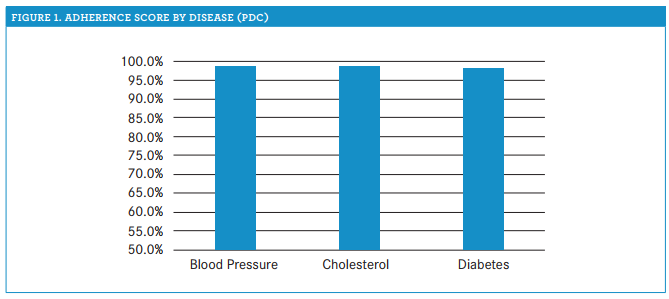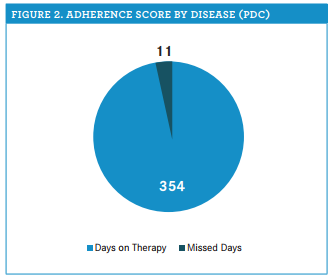Article
Driving Patient Adherence and Outcomes Through Appointment-Based Refill Programs
Author(s):
One of the biggest struggles that patients face is ensuring that they have the proper medications on hand and are taking their medications correctly.
One of the biggest struggles that patients face is ensuring that they have the proper medications on hand and are taking their medications correctly (figure 1). Historically, patients have been given new prescriptions and asked to manage multiple, complex therapies on their own. This can result in delays in starting therapy, duplicate therapies, and gaps in care due to numerous issues. For most patients, it can be incredibly confusing to navigate the world of health care, pharmacy, prior authorizations, and drug interactions. Studies have shown retail adherence averaging 30% to 50% when patients are asked to manage their therapies on their own, and up to half of all new prescriptions may never get filled. Patients are making 5 to 6 trips to the pharmacy every month but still not getting the most benefit from their medications.
Thrifty White’s RxMedSync model makes correctly filling prescriptions much easier. The internal system identifies all eligible patients who are on 2 or more maintenance medications, and the store team reaches out to discuss the benefits of the program with each patient. The model has more than 73,000 enrolled patients who have opted in to the program. Upon individuals’ enrollment, the pharmacy team performs an initial medication review to ensure that each patient is taking the correct medications at the correct times and isn’t missing any therapy. Once the team knows that the medications are correct, it aligns them to all fill on the same date each month and proactively schedules the patient’s pickup appointment. This allows patients to each make one trip to the pharmacy every month and know that they are getting the proper medications.

Each subsequent month, the patient care team reaches out 10 days prior to the upcoming medication exhaust date to review any therapy changes, doctor visit outcomes, and adverse effects. Once the team confirms that the patient medication list is correct, it fills the patient’s medication pack and sends it to the local store for pickup on the agreed-upon date. The team manages any prior authorization or prescription renewals upstream so that there are no delays in getting the medications to each patient. Simplifying this process has resulted in adherence scores of higher than 95% and patients’ averaging 354 days on therapy each year (figure 2). Thrifty White has even created programs to sync up 30-day and 90-day fills, allowing patients to customize their schedules and still receive the full benefits.

As Thrifty White has continued to see the success of this model, it has looked for ways to further engage patients and drive better outcomes. The first step is always making sure that they are on the right medications and have medication on hand. From there, Thrifty White looks for ways to simplify its process, such as providing tools free of charge to help patients take their medications correctly each day. For patients who just need a simple reminder, Thrifty White provides RxTimercaps, which provide a countdown since the vial was last opened. Another solution is the HealthyPackRx Blister packaging program, which simplifies complex regimens by creating blister packs for each dose time, then including the proper medications. For patients who have trouble remembering when to take certain doses, they simply pull the next packet out of the box, double-check the label, and take those medications. This is a great way to ensure that patients are taking the proper medications every time.
Pharmacies continue to play a large role in the health care system, and finding ways to simplify and drive adherence opens the door to opportunities to expand pharmacy practice. In Thrifty White’s model, having a scheduled pickup appointment each month allows the pharmacy to layer on additional clinical services to each fill. In addition to picking up medications, a patient may also have an annual Comprehensive Medication Review, receive a pneumonia vaccine, and have an injectable medication administered in the store. In the future, Thrifty White could layer on additional clinical surveys, such as therapy effectiveness assessments, glycated hemoglobin (A1C) checks, lab draws, and preventive cancer screenings, all possible because of a robust medication synchronization program that allows the team to know when patients are coming in and build the practice around them. By creating a robust patient management plan, Thrifty White is able to lower overall health care costs and drive better patient outcomes. In a one-year pilot program, the model saved one health plan more than $2400 per patient in total health care costs.
Pharmacists have long been considered the most accessible health care practitioners, as well as some of the most trusted. It is time that pharmacists leverage their physical footprint to provide clinical services above and beyond the transactional “putting pills in a bottle.” As pharmacists move toward this future, a well-functioning medication sync program is a great foundation on which to build a clinical practice.
Jeremy Faulks, PharmD, is the Director of specialty pharmacy, Thrifty White Pharmacy.





